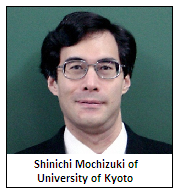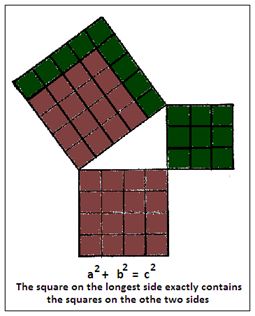The world of mathematics is in a spin while grappling with what may be a breakthrough in the science, says S.Ananthanarayanan.
Mathematician Shinichi Mochizuki of Kyoto University in Japan has published a 500-page document as a proof of a math problem of unsurpassed complexity, known by the deluding name of the ‘abc conjecture’, and groups of the world’s leading mathematicians are going into huddles to see if it is really so. One group has already met at Oxford earlier this month and another is currently meeting at Utrecht in the Netherlands.

The abc conjecture is so named because it concerns groups of three integers, or whole numbers, referred to simply as a, b, and c, and it deals with fundamental properties of numbers and how prime numbers enter while examining relationships among other numbers. Certain problems that call for solutions in the form of integers are a class of study by themselves and include the legendary ‘Fermat’s last theorem’. If the abc conjecture is proved, it would affect a wide area and answer many long standing questions. “It will be one of the most astounding achievements of mathematics of the twenty-first century,” Dorian Goldfeld, a mathematician at Columbia University in New York, is reported as saying.
Number theory
Quite apart from the use of numbers for counting, measurement and describing shapes, forces, time and speed, etc, in the different branches of mathematics, the study of numbers themselves has held a fascination all its own and many the remarkable results have proved useful in manipulating the physical world. Numbers themselves have no existence, apart from being a quality that is shared by ‘equal numbers’ of groups of things, but with idea of numbers have grown the concepts of fractions, decimals, infinite, never repeating decimals, binary arithmetic and the science of algebra. And number theory consists of abstractions that examine the relationships between numbers, either integers or the numbers that arise with the use of integers.
Fermat’s last theorem is a relationship of numbers, always verified, but which could not be analytically proved since 1647, till it fell to Andrew Wiles of the University of Oxford in 1994. The theorem states that there can be no three integers, say a, b and c, such that an + bn = cn, for a value of n greater than 2. This is the same as saying, we can have a + b = c, which is just the sum of any two numbers, a and b, or we can have a2+ b2=c2, but we there are no values of a, b and c which satisfy, a3 + b3 = c3, or any higher powers of the numbers. We can see that here, we are dealing with single equations with three variables, a, b and c, and there can hence be several sets of acceptable values, or solutions, and some of them are all in integers. The fact that there is a space of solutions that is speckled with integer solutions is fascinating, and then, to say that there can be no integral solutions for higher powers points to depths in the nature of numbers that mathematicians sought in vain for three and a half centuries.
The abc conjecture goes one further and encloses within itself many other mysteries in the ways of numbers. The conjecture, which was proposed independently by the French, Joseph Oesterlé and Swiss, David Masser in 1988/1985, is about three numbers that are relatively prime, that is, that they do not share any prime factors. For example, the numbers, 15 and 16 are relatively prime, because the prime factors of 15 are 3 and 5, while 16 has only one prime factor (other than 1), which is 2. This is not true of 18, whose prime factors are 2 and 3, the factor, 3, being common with 15. Now, the conjecture says that if there are three such numbers, a, b and c, so that a + b = c, then the product of the separate prime factors of a, b and c is generally greater than the number c, and there is a limit to the number of exceptions there can be.
In the case of Fermat’s theorem and the power 2, we can see that this is a case of a right angled triangle, with sides of length 3, 4 and 5, for instance. We can see that this can be proved graphically, by showing that the area of the square on the longest side is equal to the areas of the squares on the other two sides. What Fermat’s theorem states is that such a construction becomes impossible if we consider the cubes, or any further powers, on the sides of triangles. We can appreciate that the theorem is treating a relationship of multi-dimensional spaces and numbers.

The abc conjecture deals with a similar relationship, and includes prime numbers, of which Euclid proved over 2000 years ago that there are an infinite number, dotting the endless line of integers. There is as yet no formula to say which numbers are primes, but it has been shown that the larger the number, the less likely it is to be a prime. There are also unproved theorems, like the one that says that any number can be expressed as the sum of a pair of primes or that there is an infinite number of pairs of primes that differ by the number 2.
While the conjecture was proposed in 1985, it was in 2012 that the Japanese Shinichi Mochizuki posted a series of four papers, 500 pages in all, of exceedingly abstruse mathematics, purporting to be a proof. Mochizuki did not publish the proof in any journal, but only in his own website, and even since, does not come out to explain his work and has resisted interviews. He also does not travel outside Japan and it was only earlier this month that he appeared on Skype at the conference in the University of Oxford. Apart from being voluminous, the proof is said to introduce completely new ideas and approach and may not have been read and understood by more than a handful of people. An early presentation at the Oxford meeting is said to have connected the proof with ideas of topology, a branch of mathematics that deals with the relationship of entities whose containers are stretched or twisted. The remaining parts of the meeting, however, are said to have made little progress.
But Mochizuki has a reputation as a creative and responsible mathematician and the community is striving hard to makes sense of the work, and if possible, to put it in a more accessible way. “The exciting aspect is not just that the conjecture may have now been solved, but that the techniques and insights he (Mochizuki) must have had to introduce should be very powerful tools for solving future problems in number theory,” Brian Conrad of Stanford University is reported to have said.
|
Prime numbers in IT A form of encoding messages to ensure both authenticity and secrecy is with the help of very large prime numbers. The method works because it is practically impossible to find the factors of a very large number generated from a pair of large prime numbers. Here, a very large number generated from a secret, large prime number is published as a person’s ‘public key’. Messages are then encrypted based on the secret prime number, known as the private key, in a way that the messages can be opened only with the use of the sender’s published, public key. If a message opens, it hence proves that it actually came from the purported sender. Secret messages can similarly be encrypted using an intended recipient’s public key. These messages can then be opened only with the help of the private key of the receiver, and this ensures that others cannot read a message that falls into their hands. |
|---|
|
Prime numbers in nature Some insects that stay hidden, and safe, in burrows till they emerge, from time to time, to breed, make use of prime numbers to avoid their predators. If they were to emerge at the same time every year, the predators would be there right when they appear and they may not be much breeding that season. Even if they were to delay their emergence to be once every say, eight years, they would still be at risk of predators that appeared every eight, four, or two years. A species that breeds every six years would similarly risk predators that come every six, three or two years. But if the species bred every seven years, the risk would only be of predators who appear every seven years, as seven has no divisors. Varieties of Magicuda, a celebrated ‘periodic’ strain of grasshopper, stay underground for either thirteen or seventeen years, before they merge for a brief six weeks of feeding and breeding. The prime number of years of hibernation seems to be their secret of survival. 
Mario Marcus and others at the Max Planck Institute of Molecular Physiology, Dortmund developed a mathematical model of competing species with different reproductive efficiency, feeding habits and cyclicity. Computer simulation to discover the most efficient cycles was found to work as a prime number generator! |
|---|
------------------------------------------------------------------------------------------